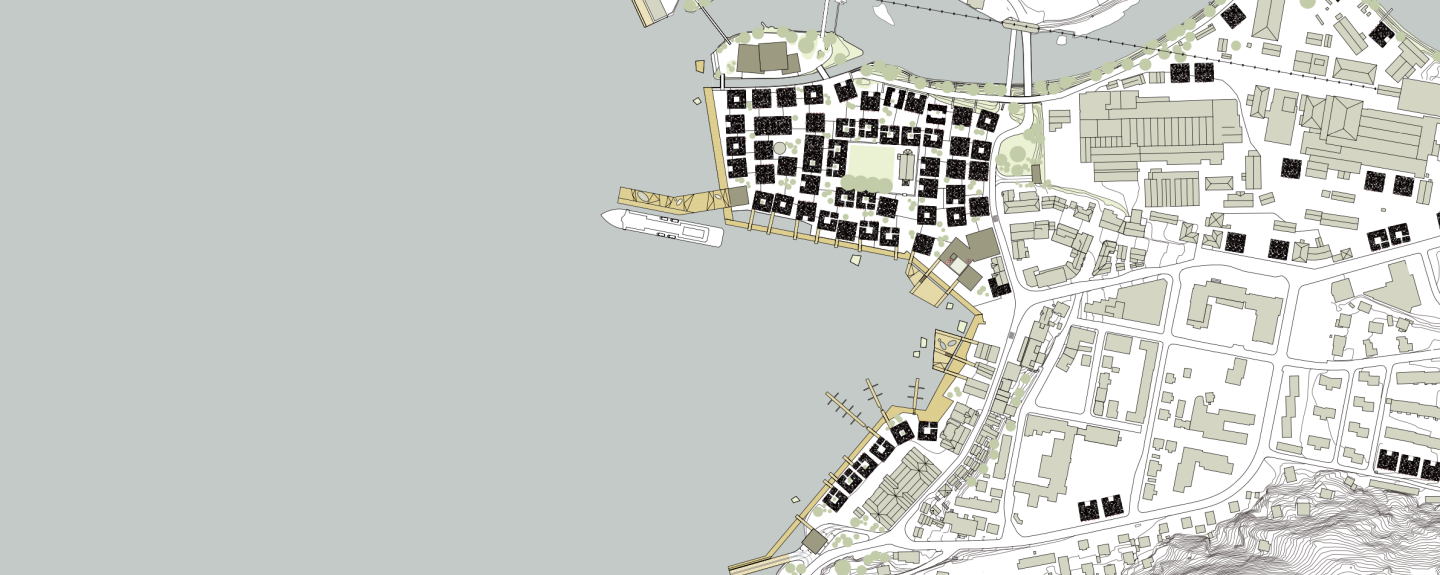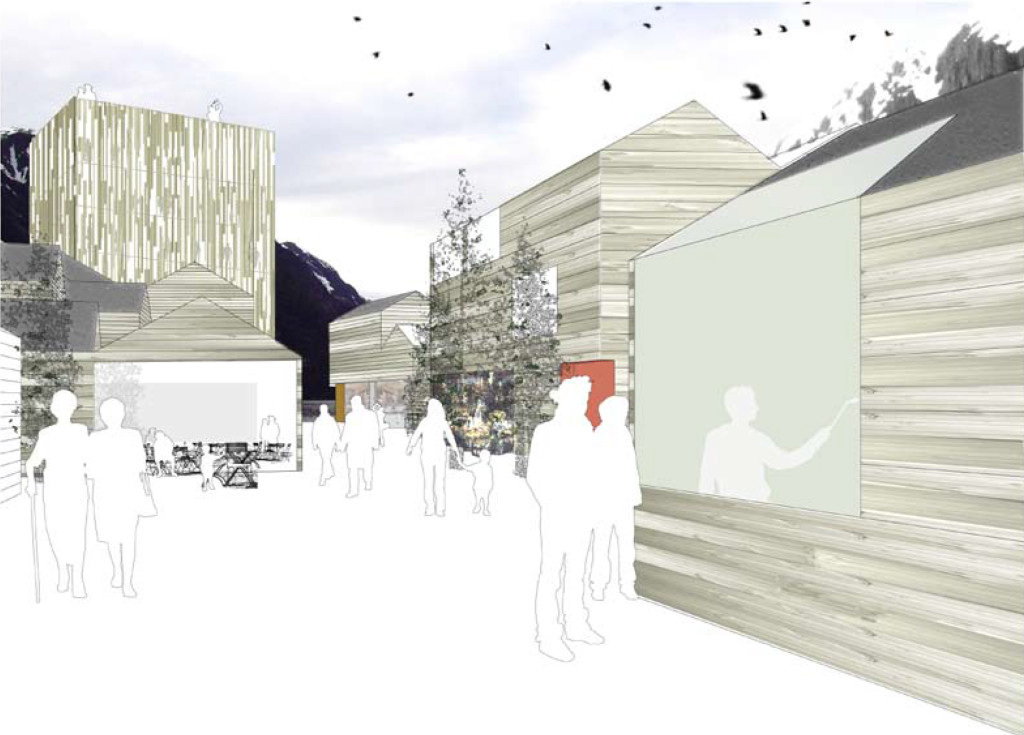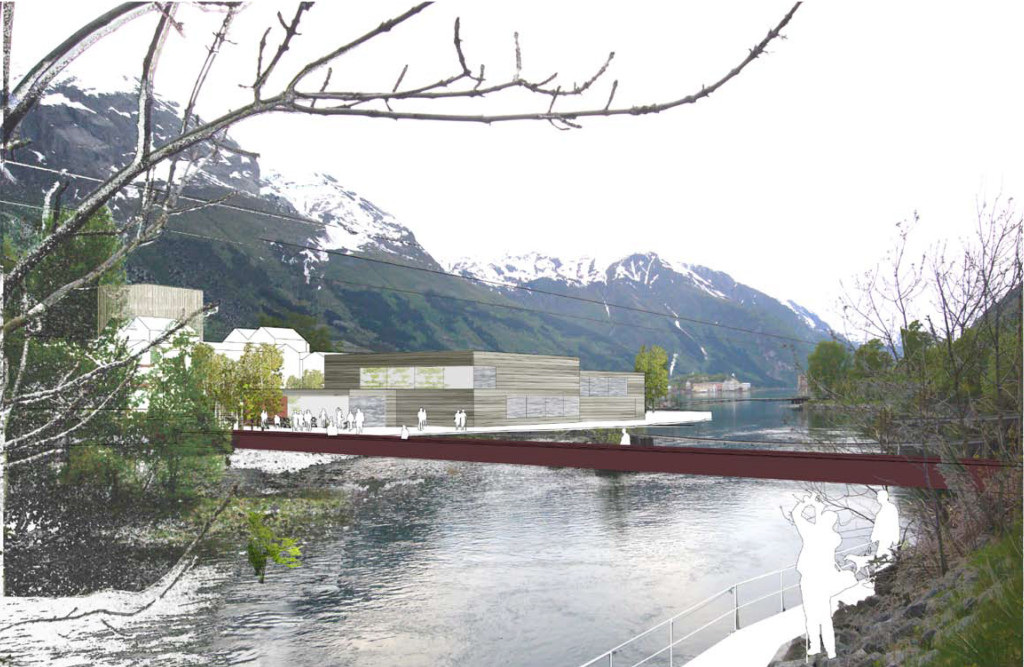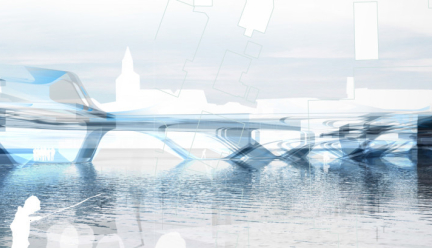Project:
Odda Lace

About
-
THE PATH
Odda has a surrounding path along the shore. the path is a promenade, an embankment and green space that frames the town. Like Lace this feature highlights the limits of civilisation to the natural surroundings of the fjords and the mountains. Walking on the edge of the town offers the great views of the glacier, waterfalls, mountains scenery and the town of Odda – in all its fascinating contrasts and facets. the concept of developing the city bottom up – from the local facts and features - makes the new urban image a new interpretation of the old. It collects the identity of all eras of the town into a new picture.
THE HOTEL
In this panoramic view, the fragmented structure from the new part of the town on the old almeverket site stitches the old fragmented structure of the harbour and farmers town together in a dense urban fabric. the fragmented structure contrasts to the broad waterfront, the generous town hotel and culture house, as well as the monumental nature and industrial silhouette.

THE ISLAND
the ferry terminal and the cruise terminal comply with the structure of the path, the long wooden border holding the city back from the water. the urban edge of the inner city is mirrored in the green banks of the river with the new island on historic site. the culture hall is the new meeting point of people of Odda and their guests. the culture house lies behind the trees, looking proudly out over the fjord. the path follows the river up to the Smelteverk and its many features, linking it closely to the inner city. the new park on the site of the converted deponie offers great views back over the town.
THE TYPOLOGIES
the provoking jump in scale inspires to dense housing in close relation to each other, opposing the big features of the nature. It also inspires to a mixture of the new and old Odda-inhabitants, students, tourists and workers, who together creates a rich social net in the woven fabric of the town. the nature of Odda is inviting, both to visit and to stay. tourists are coming to see the glaciers, go skiing and hiking. the infrastructure offers, with car ferry and new central bus terminal, the best connections to fjords and inland.
the narrow alleys and streets with their open places invite visitors to discover and to stay in. tree groups out of conifer and birches, compliment the purple plums with their pink clouds of flowers that create cut outs of the mountains into the town in the spring. the mountains of waste always form the monumental background of density of town and wide open wilderness of fjord and glaciers.
-
This project presents almost a new city: a structure of quite small-scale mixed-use blocks and streets that covers most of the site. there is parkland in connection with the existing church and the industrial area, but the main public feature is the waterfront, which in the jury’s opinion is the strongest feature of this project.
It captures the fjord and connects to the city in one simple gesture full of meaning. the landmark building, the ferry terminal, is located at the end of the waterfront walk. the existing main street in the urban pattern connects also easily with the new parts, - as a prolonged walk. the very nice waterfront – the best part of the project holds a good scale for the city. allthough the design is a bit retro – sort of a medieval picture, it is challenging to implement the project on site, as the public square is nice, connected to the water. the project must be developed with a larger green space.
this proposal needs to be planned for staged development and must be taken further, as there is a misunderstanding of the conditions in the city regarding the need for housing by the massive urban fabric proposed for this place. the key elements in the plans for the development of Odda is to reverse the falling population trend and turn the town into an attractive urban centre for local commercial activities and new tourism.
One should in that sense in many ways be able to imagine development here without housing, - or at least with a much lower building impact, - which would also challenge the somewhat homogeneous urban aesthetic and the somehow miniaturized scale of the proposal. But the approach towards the fjord is sensitive and well considered, and the project is exquisitely presented.
-
team: Avig räta
team leader: Lina Lahiri (Se)
associates: Karolin Mollmann (De), Sibylle Bornefeld (De), Katja Erke (De)CONTACT
torstrasse 175
10115 Berlin, Germany
+49 302 463 8962
avigraeta@googlemail.com

